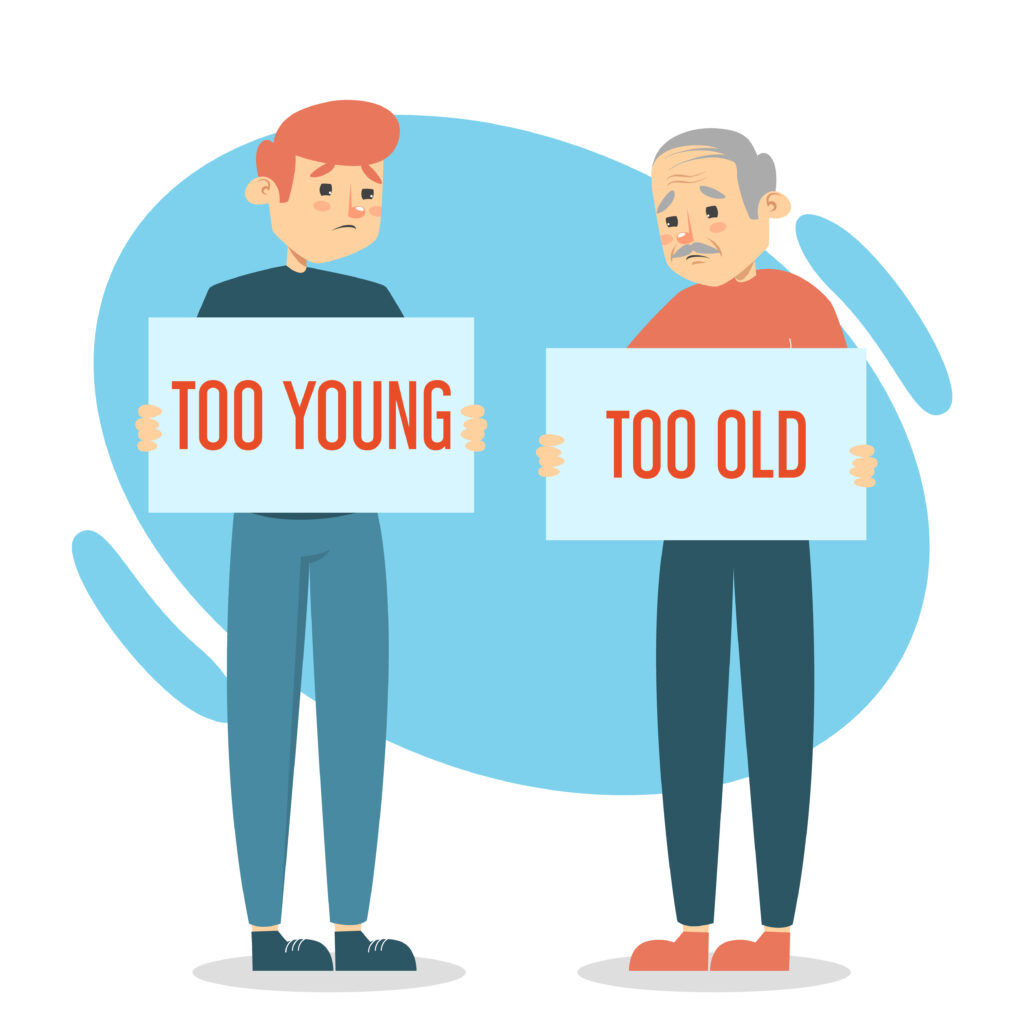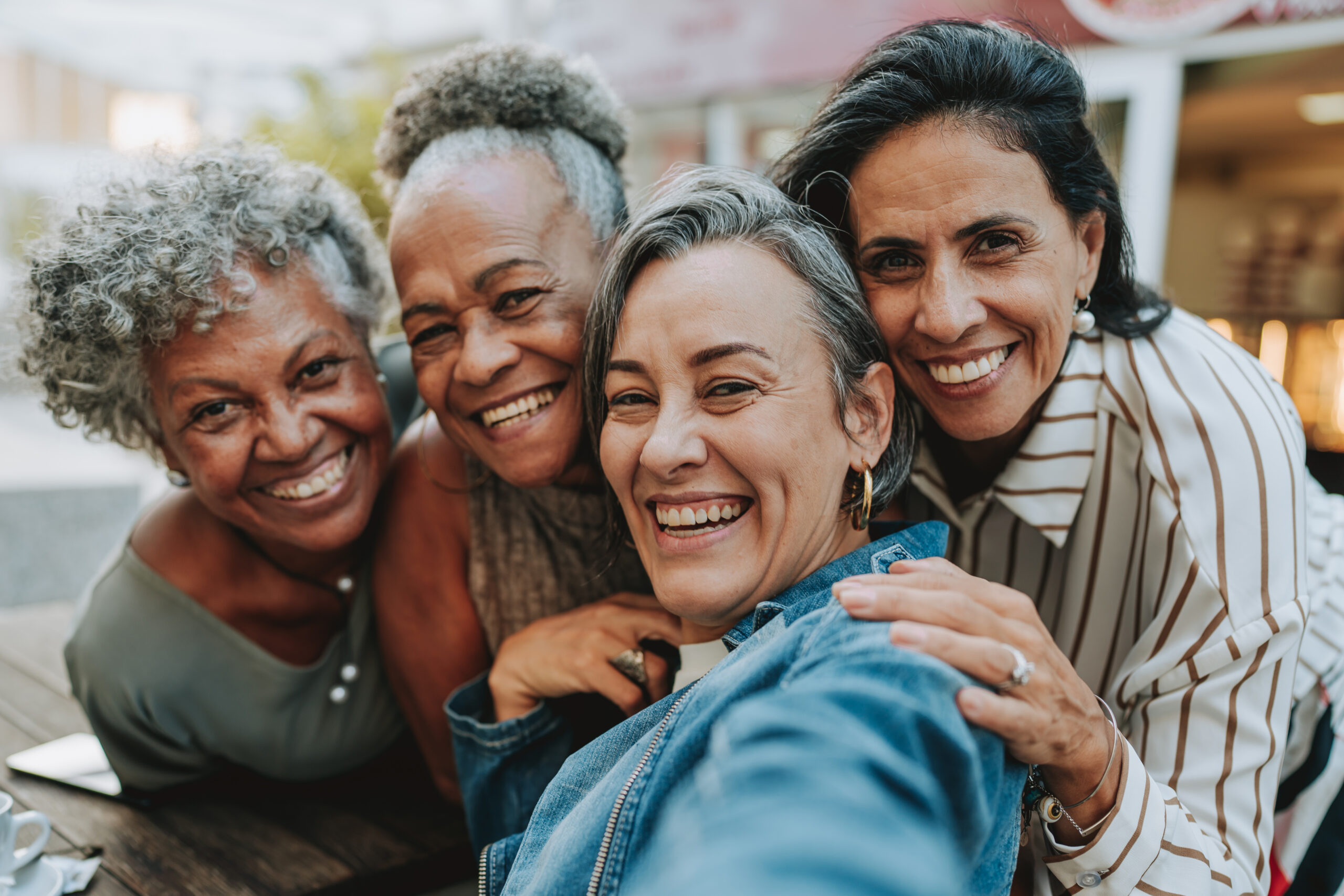Aging is a natural and lifelong process that enriches individuals with wisdom, experience, and resilience. It means that we get to continue to be alive! Yet, despite the many impactful contributions older adults make to society, ageism—discrimination and stereotyping based on age—remains a widespread issue. Ageist attitudes, often fueled by judgements we are not even aware of, shape policies, our workplaces, and healthcare practices, negatively impacting the well-being of older individuals. These stereotypes can reduce self-esteem, discourage participation in healthy behaviors, and contribute to mental and physical health challenges.
The Reframing Aging Initiative is a social change movement that seeks to reshape public understanding of aging, foster positive perceptions, and advocate for inclusive policies. By challenging harmful stereotypes and promoting an age-inclusive narrative, we can create a society that supports individuals of all ages, ensuring dignity and opportunity for everyone as we move through life.
Understanding Ageism
Definition and Impact on Society
Ageism is the discrimination, prejudice, and stereotyping of individuals based on age. It can manifest in various ways—limiting job opportunities, influencing healthcare decisions, and shaping social interactions. By recognizing ageism and its effects, society can take meaningful steps toward change.
How We See Ageism in Everyday Life
Ageist stereotypes are deeply ingrained in media portrayals, workplace environments, and even healthcare settings. Older adults are often depicted as forgetful, weak, or resistant to change, leading to exclusion from conversations and decision-making processes. Seeing older adults as “different” is a key factor in understanding the origins of ageism. In the media older adults are often not represented at all, a 2021 report found that characters ages 50 and older represented less than a quarter of all characters in top-grossing films from 2010 to 2020. When they are included it’s often as a stereotyped absent-minded or frumpy character.
The Role of Unconscious Bias
Many people hold ageist beliefs without realizing it. Years of exposure to negative messaging in films, advertisements, and news coverage shape subconscious assumptions about aging. Overcoming these biases requires awareness and proactive efforts to challenge stereotypes.

The Reframing Aging Initiative
Mission and Objectives
The Reframing Aging Initiative is committed to changing public perceptions about aging. Its mission is to provide accurate, research-backed messaging that dispels myths and reinforces the value of older individuals.
Strategies for Changing Public Perceptions
By adopting inclusive language, sharing positive stories, and encouraging diverse representation, the initiative seeks to shift societal attitudes about aging. Communication strategies play a vital role in addressing misconceptions and fostering appreciation for aging.
Key Stakeholders and Partners
This initiative collaborates with organizations, policymakers, media representatives, and community leaders to promote age-inclusive narratives.
Communicating About Aging Effectively
Best Practices for Language and Messaging
Language shapes perceptions. By using empowering and accurate language when discussing aging, we can dismantle stereotypes and promote inclusivity.
The Story of Reframing Aging [pdf]
How to Counter Negative Stereotypes
Challenging negative portrayals involves highlighting the strengths of older individuals, from their resilience to their contributions in various fields.



Examples of Successful Reframing Efforts
- Campaigns that celebrate lifelong learning and career transitions.
- Media narratives that depict older adults as innovators and changemakers.
Reframing Aging Communication Guide [pdf]
Global Perspectives on Aging
How Different Cultures View Aging
Some cultures revere aging as a sign of wisdom and experience, while others tend to focus on youthfulness. Understanding these perspectives helps inform strategies for countering ageism worldwide.
The Role of Societal Attitudes in Shaping Well-being
Positive societal attitudes toward aging contribute to stronger mental health and active participation in communities. Emphasizing lifelong growth and contribution fosters a more inclusive society.
The Impact of Ageism on Health and Well-being
Psychological and Physical Effects of Ageist Beliefs
Ageism leads to poorer health outcomes by discouraging older individuals from seeking medical care, maintaining active lifestyles, or socializing with others.
How Positive Attitudes Improve Health Outcomes
Research shows that individuals who view aging positively tend to live longer, healthier lives. Encouraging confidence and participation can strengthen overall well-being.
Frameworks Institute Research Report [pdf]
Stereotypes of aging play a critical role in understanding the origins of ageism. Psychologist and epidemiologist Becca Levy created a field of study exploring how negative age stereotypes impact longevity among older adults, stereotype embodiment theory. This framework posits that assimilated aging stereotypes from one’s culture impacts how a person views themselves as they age, which influence health, functioning, and longevity (Levy, 2009). In other words, the beliefs we hold in childhood toward older adults will turn into the attitudes we hold toward ourselves as we age; if we have negative beliefs about aging and older adults, we will embody those negative beliefs as we age. In fact, Levy’s extensive research shows older adults who have more positive attitudes and beliefs toward aging and growing older live over seven years longer than those who hold negative beliefs toward aging (e.g., Levy et al., 2002).
Implicit Bias and Ageism
Understanding Unconscious Prejudice
Ageist bias is often something people aren’t aware of. Many people pick up negative ideas about age from TV, movies, and society without even realizing they have developed these biases.
Strategies for Recognizing and Addressing Implicit Bias
Education, awareness, and inclusive representation can challenge internalized biases and encourage positive perceptions of aging.
Advocacy and Policy Solutions
Supporting Age-Inclusive Policies
Policy changes can combat ageism at a systemic level. From workforce protections to healthcare accessibility, advocacy efforts drive meaningful change.
Ways to Engage in Social Change
Individuals and organizations can promote inclusive messages through education, awareness campaigns, and policy advocacy.
Resources for Organizations and Individuals
By accessing tools and strategies designed to reframe aging, society can collectively work toward a more inclusive and supportive future.
What Can You Do to Reframe Aging and Flip the Script?
Everyone has a role to play in countering ageist stereotypes and fostering a more inclusive view of aging. Whether you’re an older adult, a care partner, or a healthcare professional, small shifts in language and perspective can help challenge outdated narratives and reinforce the value of aging. Here’s how:
Older Adults
- Embrace Your Experience – Share your wisdom and achievements to highlight the value of lifelong growth and learning.
- Challenge Ageist Assumptions – Correct misconceptions when you hear them, whether in conversations, media, or policies. If someone makes you feel small gently stand up for yourself. For example, “I don’t appreciate being treated differently just because I am older.”
- Stay Engaged – Participate in advocacy efforts, community activities, or mentorship programs to demonstrate the contributions of older individuals.
- Use Empowering Language – Avoid self-deprecating language that reinforces negative stereotypes about aging. Try to catch yourself when you say things like, “Oh, I am just having a senior moment.”
Care Partners
- Encourage Independence – Support autonomy and decision-making to reinforce dignity and capability at all ages.
- Speak Positively About Aging – Model respectful and uplifting language when discussing aging and older adults. While you may be taking care of someone who has limitations, focus on their remaining strengths.
- Educate Yourself and Others – Learn about unconscious bias and help others recognize and challenge ageist narratives.
- Advocate for Inclusive Policies – Support initiatives that promote age-friendly communities and equitable resources.
Healthcare Professionals
- Prioritize Person-Centered Care – Recognize the individuality of older patients rather than making assumptions based on age. Speak directly to the patient, not to their caregiver.
- Avoid Ageist Language – Refrain from using terms that reinforce stereotypes, such as “elderly” or “too old for treatment.”
- Recognize Implicit Bias – Reflect on personal biases and adjust care practices to ensure equitable treatment for all ages.
- Educate Patients and Families – Provide accurate information about aging that emphasizes strength, resilience, and potential.
Reframing aging is a collective effort, and every conversation, interaction, and policy shift can contribute to a culture that values people at all stages of life.


